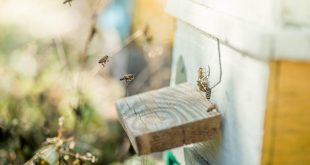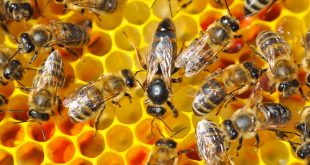Langstroth beehives make use of boxes stacked on top of each other. This feature gives the Langstroth beehive superior expandability by making use of available vertical space. There are two sizes of Langstroth beehives: 10-frame and 8-frame. Beekeepers can choose to purchase or make their own Langstroth beehive boxes. The boxes come in handy when you need to add space for your bees to use as brood chambers or for honey storage. This article details how to build a Langstroth beehive box. It covers shallow, medium and deep boxes for both 8-frame and 10-frame sizes of Langstroth beehives.
Read More »How to Build a Quilt Box for a Langstroth Beehive
Moisture control in beehives is important for all beekeepers, and this can be achieved using various equipment such as moisture boards or quilt boxes. Quilt boxes are a standard feature of Warre beehives that some Langstroth beekeepers sometimes use. Not many beekeeping equipment manufacturers have quilt boxes for Langstroth beehives, however, both beginner and experienced beekeepers can build a quilt box for their own use. The process requires some wood and metalworking skills and a few tools. This guide shows you how to build a quilt box for a beehive and its use in beekeeping.
Read More »Beehive Mesh – Adding a Mesh to Keep Out Predators
Protect your beehive from predators effectively with our practical guide. Learn how adding a mesh around the hive can safeguard your bees from various threats, ensuring their safety and well-being. This article is essential for beekeepers who want to prevent unwelcome intrusions and maintain a healthy bee colony.
Read More »How Many Honeybees Live in a Colony?
Have you ever wondered how many honeybees live in a colony? This piece offers a fascinating look into the complex and dynamic society of honeybees, revealing the factors that influence colony size and the intricate roles played by bees. Perfect for bee enthusiasts and anyone curious about the inner workings of these essential pollinators.
Read More »The Ethical Harvesting of Honey
Explore the principles of ethical honey harvesting with our thoughtful article. It's a must-read for responsible beekeepers and honey enthusiasts who value sustainable practices. The guide delves into methods that prioritize the well-being of bee colonies, ensuring that honey is collected without depleting their essential resources. It also emphasizes the importance of maintaining a balance between human needs and the health of bee populations, advocating for practices that contribute to the overall sustainability of beekeeping.
Read More » BeeKeepClub Resources and Guides for Beekeepers
BeeKeepClub Resources and Guides for Beekeepers




